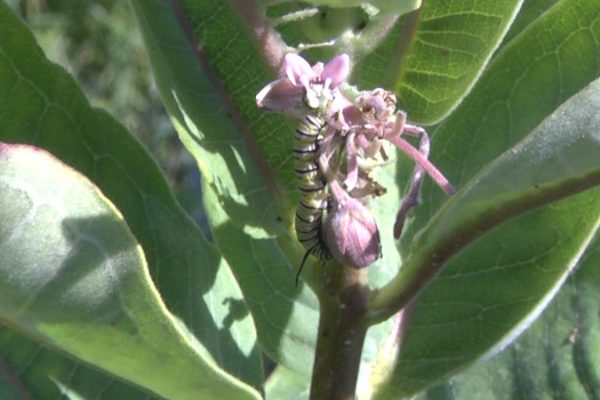Throughout the summer, you'll find two groups of students exploring prairies near Cornell College. They're searching for milkweed plants for their Cornell Summer Research Institute (CSRI) project.
“The milkweed is the only plant that the monarchs will lay their eggs on and the only plant that the caterpillars will eat off of," said Baley Good '18.
They're searching for milkweed plants for their Cornell Summer Research Institute (CSRI) project.
“The milkweed is the only plant that the monarchs will lay their eggs on and the only plant that the caterpillars will eat off of," said Baley Good '18.
Good is just one of four students working on the research project. Belou Quimby '19, Camden Grundeman '19, and Marin Dettweiler '19 are also taking part. The students work in the prairies a few times a week to gather data.
“We go through each milkweed, we check for eggs, how tall it is, how many leaves it has, and so on," Dettweiler said.
They want to get a better pictures of why the population of monarchs is declining and what's threatening the monarchs. The
students are working with Professor Tammy Mildenstein to study the relationship between monarchs and prairies.
“We know that prairies have been decimated and are now less than one percent of the original cover that they used to have in North America," Professor Mildenstein said. "The assumption is the loss of prairies had led to the loss of milkweed, which had led to a loss of monarchs. "So, our overall question is how many milkweeds does a typical prairie produce? We are talking about restoring prairie to restore monarchs, but we don’t know how much prairie to restore until we know how many milkweeds a prairie produces and then–how many monarchs will a milkweed plant produce?”
Watch their video story to find out more:
